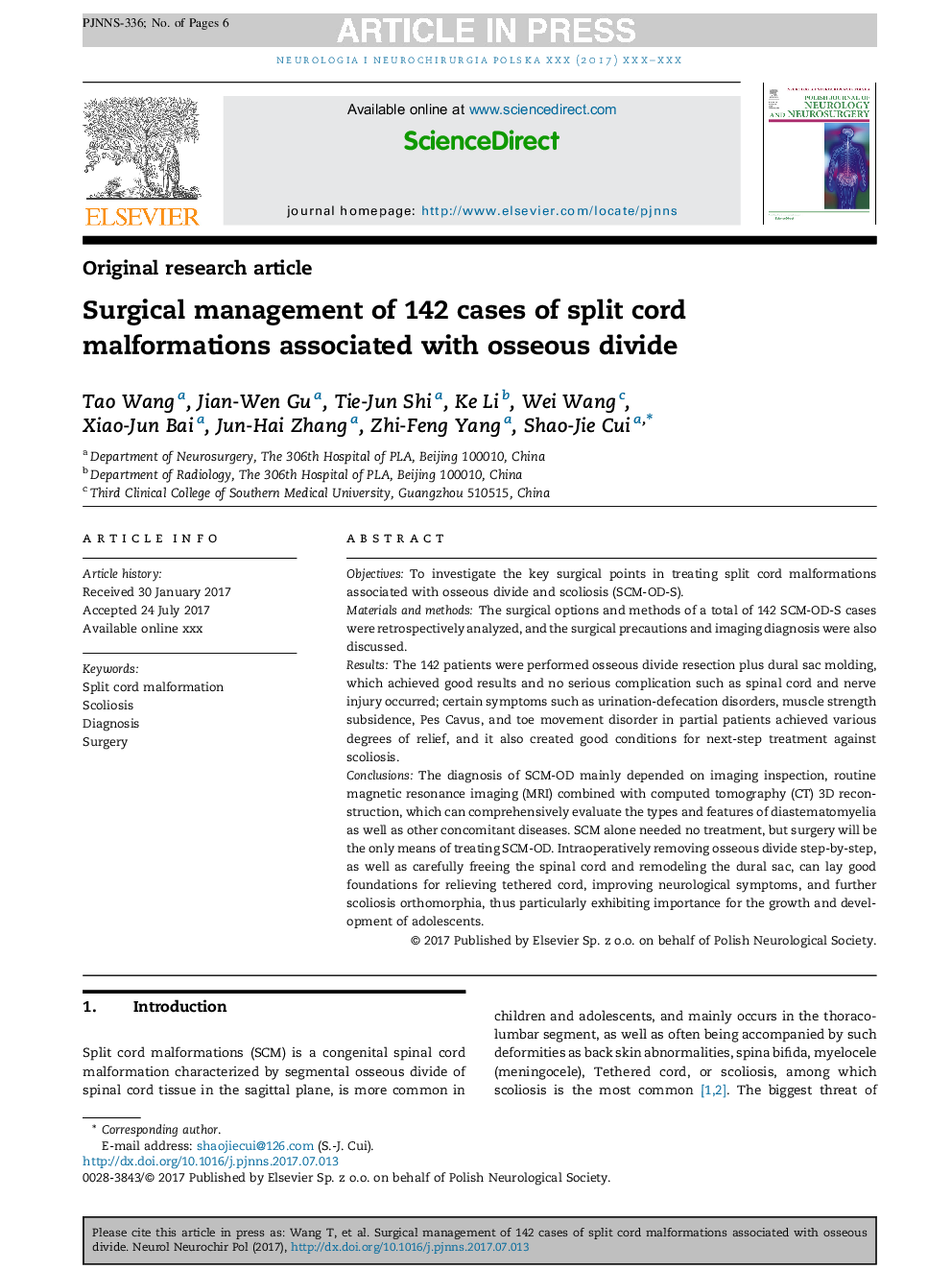| Article ID | Journal | Published Year | Pages | File Type |
|---|---|---|---|---|
| 8457330 | Neurologia i Neurochirurgia Polska | 2017 | 6 Pages |
Abstract
The diagnosis of SCM-OD mainly depended on imaging inspection, routine magnetic resonance imaging (MRI) combined with computed tomography (CT) 3D reconstruction, which can comprehensively evaluate the types and features of diastematomyelia as well as other concomitant diseases. SCM alone needed no treatment, but surgery will be the only means of treating SCM-OD. Intraoperatively removing osseous divide step-by-step, as well as carefully freeing the spinal cord and remodeling the dural sac, can lay good foundations for relieving tethered cord, improving neurological symptoms, and further scoliosis orthomorphia, thus particularly exhibiting importance for the growth and development of adolescents.
Related Topics
Life Sciences
Biochemistry, Genetics and Molecular Biology
Cancer Research
Authors
Tao Wang, Jian-Wen Gu, Tie-Jun Shi, Ke Li, Wei Wang, Xiao-Jun Bai, Jun-Hai Zhang, Zhi-Feng Yang, Shao-Jie Cui,
